Graded Stakes Winning Owners - Dennis Albaugh, Albaugh Family Stable (Catching Freedom)
/Before he could afford to buy Thoroughbreds, Dennis Albaugh had to succeed in business.
And though the start of his one-truck company out of his garage in Ankeny, Iowa, in 1979 was an utter disaster that nearly wiped him out, Albaugh preserved and now owns the ninth largest agricultural chemical company in the world, selling in 44 countries and manufacturing in nine.
Though he grew up on a farm with a couple of riding horses, he was intrigued with agriculture: “I was always intrigued that you can spray crops with chemicals to protect them.” After two-years of college, he worked for a chemical company for three years. When the company asked him to relocate his family to Birmingham, Alabama, he declined. “I started my own company,” he said.
That wasn’t easy. “I had to convince my wife to take a second mortgage on the house,” he said. She agreed. “She trusted in me, I guess,” Albaugh said.
The second mortgage allowed Albaugh to receive a $10,000 loan from the Small Business Administration. “It was very tough, I was very new in the business. It was a start-up company.”
He purchased an old oil tanker, bought weed-killing chemicals from a company in Des Moines and delivered them to a company in South Dakota on his very first run. “It was a 200-mile run,” Albaugh said. “On the way up, I thought this truck was running smoother and smoother.”
He reached his destination. “I put the hose in the receiving tank,” he said. “Nothing was coming out. I opened the lid. It was empty. I said, `Oh, boy, I just spent $8,000 of my $10,000.’ It was very scary.”
The seals on his truck had failed, and he had dumped his entire load on the trip. “I called the Department of Agriculture and told them I dripped chemicals, but nothing toxic,” Albaugh said. “They said, `Thanks for killing all our weeds.’”
Telling the Department of Agriculture was easier than telling his wife what had happened. She asked him, “How did your first delivery go?”
He told her. She didn’t blink.
Undeterred, Albaugh got a couple days' leeway from his buyer in South Dakota. He quickly bought a new truck and made the same delivery.
And then he grew his company. In 1993, he bought his company’s biggest competitor. “We really soared after that,” he said. “I don’t know the word `no.’”
His incredible success in business mirrored his ongoing success with Thoroughbreds, which also had humble beginnings after his son-in-law Jason Loutsch, who is now Albaugh Family Stables Racing Manager, nudged him into the business. Last year, the stable had three runners in the Kentucky Derby including the favorite, Angel of Empire, who finished a fast-closing third. This year, Catching Freedom has them returning to Louisville on the first Saturday of May.
Loutsch still can’t believe it: “Growing up, my best friend had a horse farm two miles from Prairie Meadows,” Loutsch said. “We made believe we were jockeys.”
Loutsch bought a horse, Mr. Mingo, in 2003, and shared the experience with Albaugh. Mr. Mingo finished second in a $59,000 Iowa-bred stakes in his second start for his new owners. “Dennis said, `This is a lot of fun. Let’s get more horses,’” Loutsch said.
They did, buying a half-share of a two-year-old Trippi filly for $42,000 at the Ocala Two-Year-Olds in Training Sale in June, 2005. They named the filly Miss Macy Sue for Albaugh’s granddaughter, and gave her to trainer Kelly Von Hemel.
“She took us all over the country,” says Loutsch, “Then she turned into one of the best broodmares in the country. It really got our juices flowing.”
Albaugh said, “It was unbelievable. We went around the country and she kept doing well.”
Their talented filly won 11 of her 25 starts, including the Grade 3 Winning Colors Stakes at Churchill Downs and five other stakes. She had five seconds and three thirds, including a third in the 2007 Breeders’ Cup Filly & Mare Sprint at Monmouth Park. She earned $880,915.
But she wasn’t done making money. She produced Liam’s Map, who had six wins and two seconds in eight starts, earning $1,358.940, Matera, a four-for-10 winner who earned $309,040 and Taylor S, who went three-for-seven and made $121,518.
Tired of not racing her talented progeny, Albaugh bred her to Giant’s Causeway and named her colt Not This Time. After finishing fifth in his debut, he won a maiden race by 10 lengths, the Grade 3 Iroquois Stakes by 6 ¾ and finished second by a neck to Classic Empire in the 2016 Grade 1 Breeders’ Cup Juvenile.
He’d already made $454,183, but he didn’t race again. He’d hurt a tendon in the Breeders’ Cup race, making his performance even more impressive. Retired to stud, Not This Time finished 2023 as the eighth leading stallion with $13,223,548 in progeny earnings. He stands this year at Taylor Made Stallions for $150,000. “He pays a lot of bills,” Albaugh said.
Along the way, Albaugh and Loutsch began an earnest pursuit of racing’s greatest prize, the Kentucky Derby. In 2016, their Brody’s Cause finished seventh. The next year, J. Boys Echo was 15th. In 2018, Free Drop Billy finished 16th. Dale Romans trained all three horses.
Last year, Angel of Empire, trained by Brad Cox, was third and Cox-trained Jace’s Road, owned in partnership with West Point Thoroughbreds, was 17th. Albaugh Family Stable and Castleton Lyons-owned Cyclone Mischief was 18th.
Catching Freedom, who is trained by Cox, has them dreaming again. “This is the 150th Derby,” Loutsch said. “We know how hard it is. It’s extremely hard to win. There are so many things that have to go right. There are so many factors going into it. This horse definitely wants to go a mile and a quarter. Hopefully, we’re fortunate enough to get a good trip.”
Albaugh said, “Just to get to the Kentucky Derby was a big honor. Having three horses last year was unheard of. We checked the history. We think that’s the record. We’re very thrilled to get back this year.”
Family is an integral part of Albaugh’s life. Loutsch and Albaugh’s daughter Tiffany have two girls, Julianah, 24, and Milan, 18. “They’re in charge of social media,” Loutsch said. “They go to all the races.”
Asked how hard it is to work for his father-in-law, Loutsch said, “Not hard at all. He’s truly one of the best guys in the world. He makes life real easy. No ego. Most importantly, he is fair and honest. He’s invested a lot in the game. We have a lot of fun together.”
Albaugh said, “My son-in-law got my interest going, it’s a whole family. It’s a lot of fun to go with all your family, it’s a lot of fun to get together.”
Especially if it’s in the winner’s circle on the first Saturday in May.











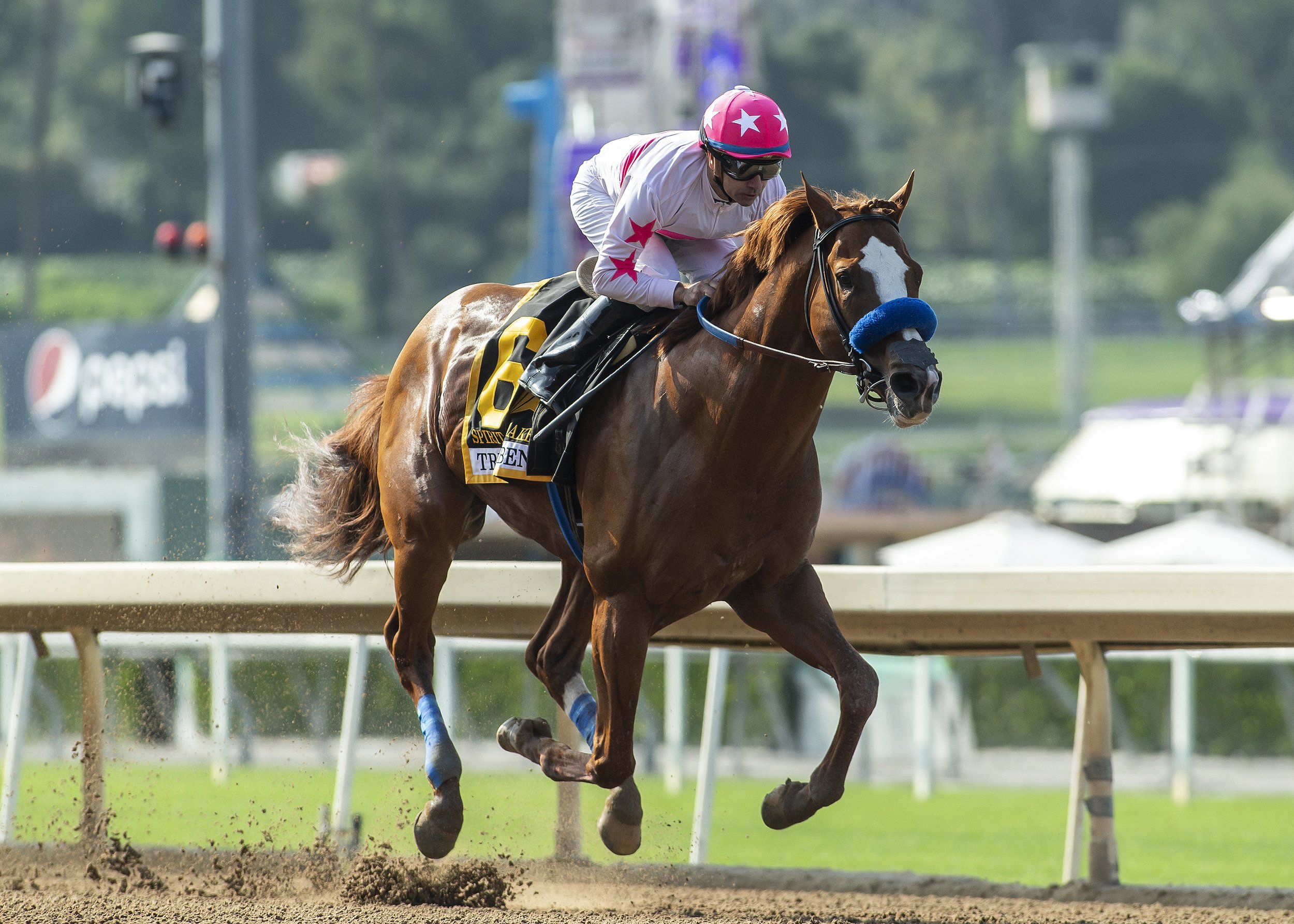
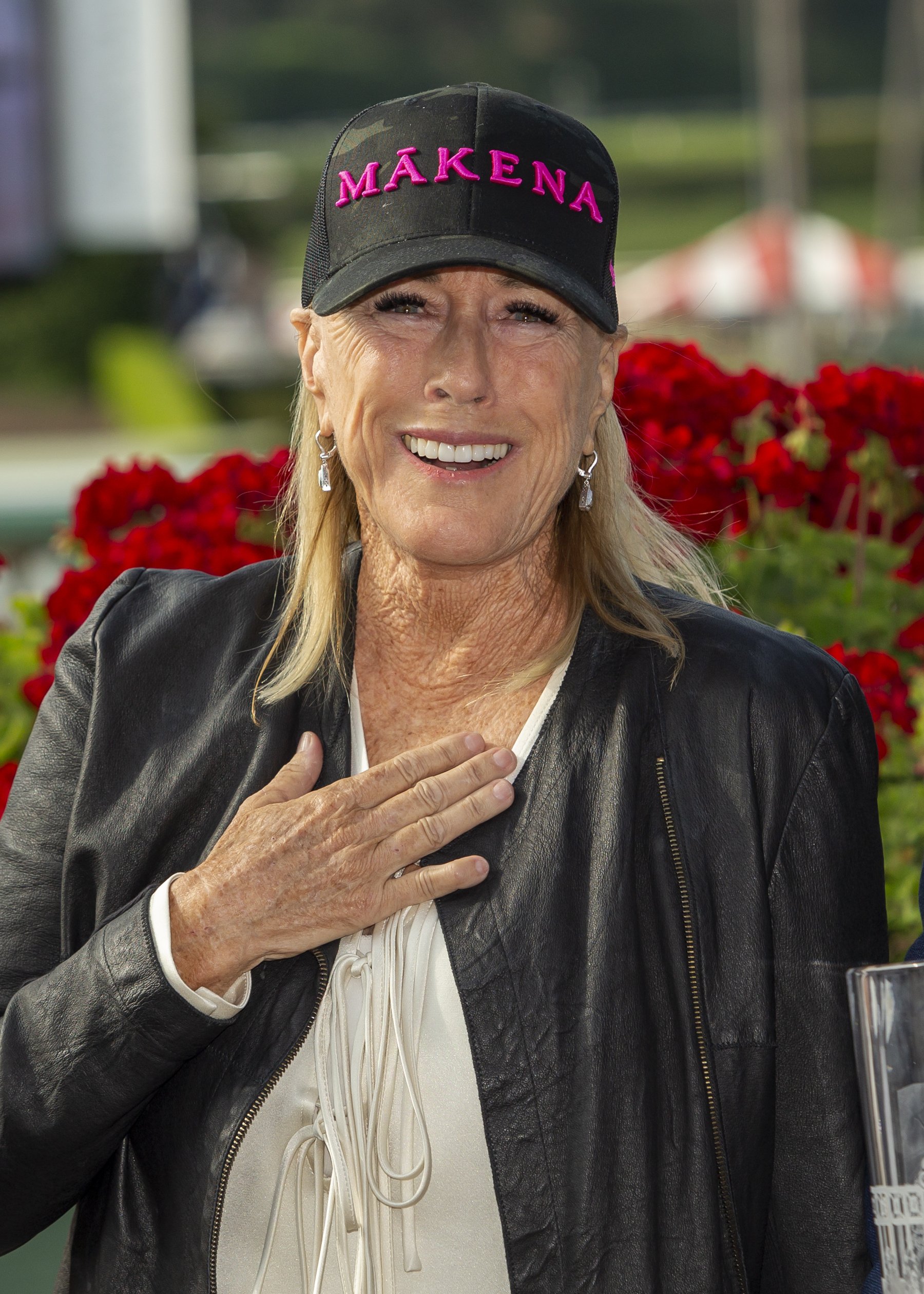
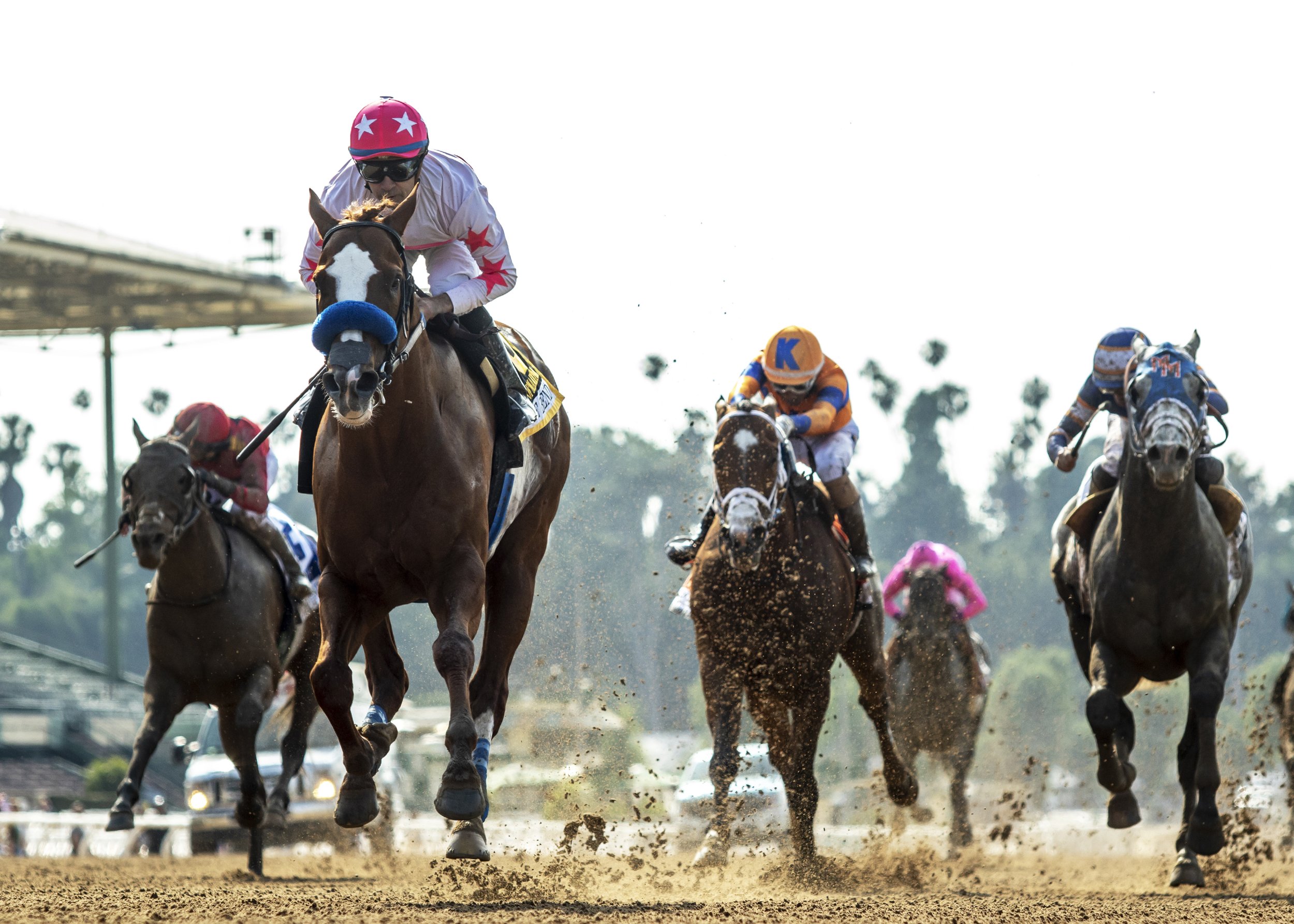

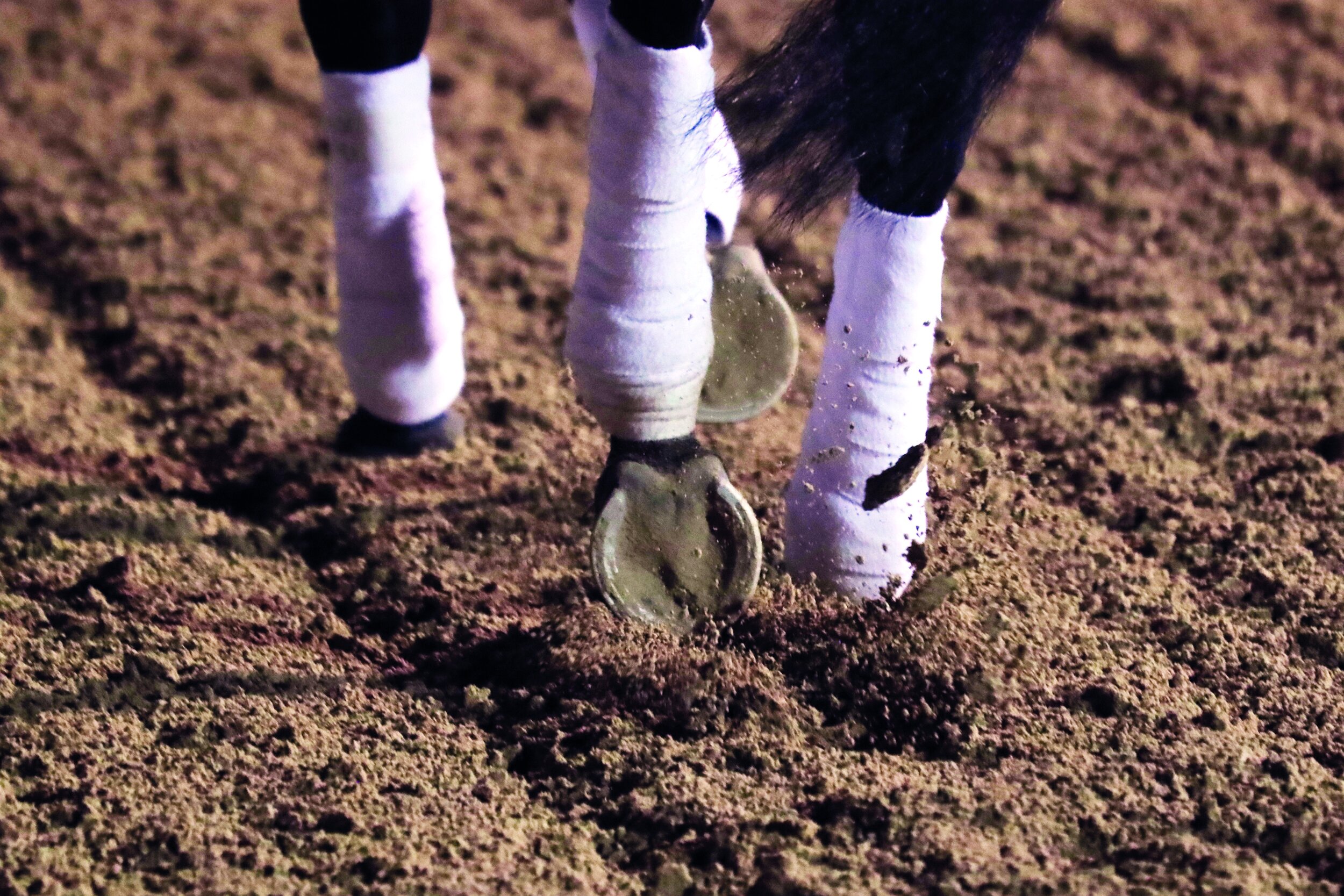






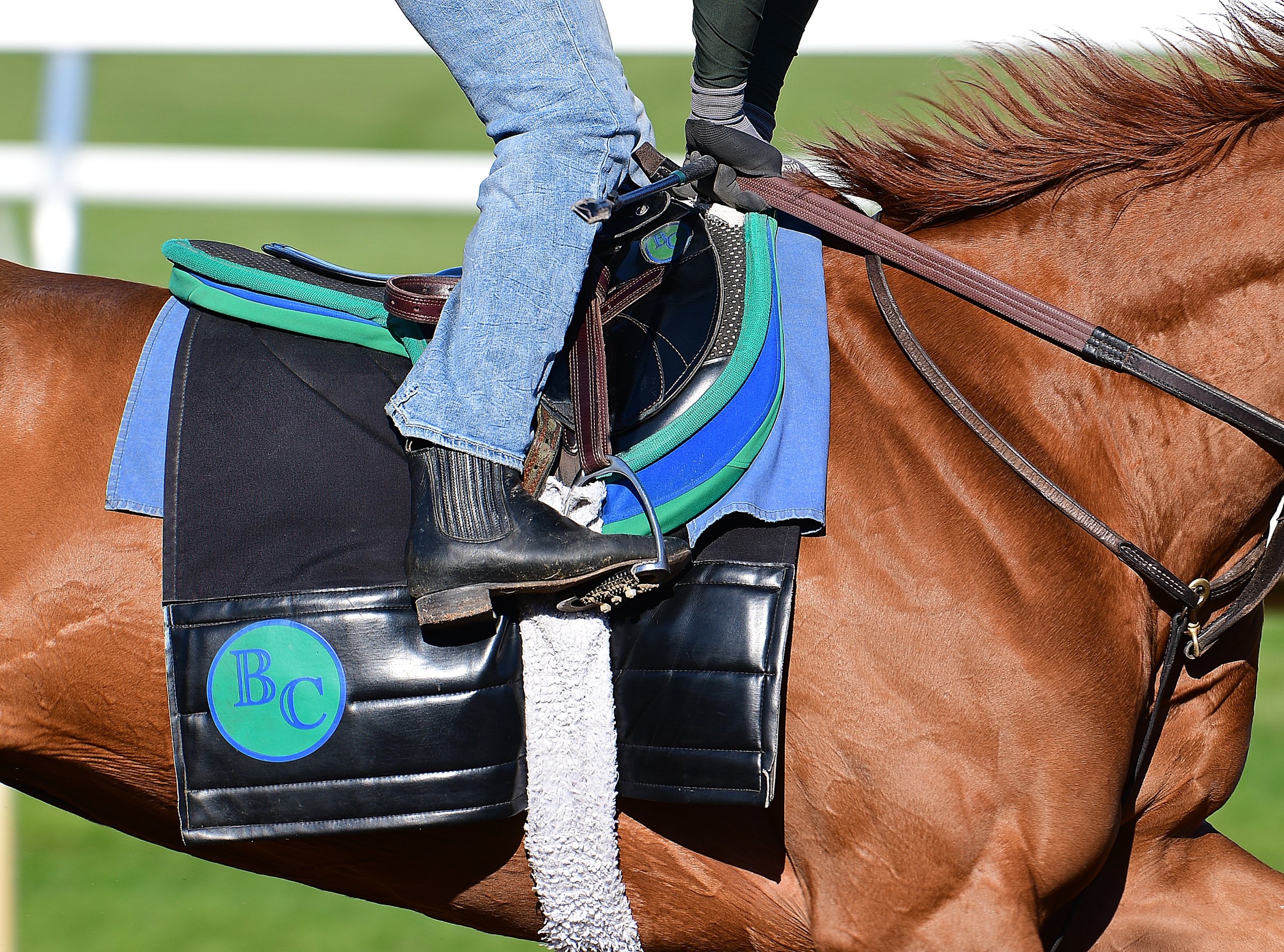





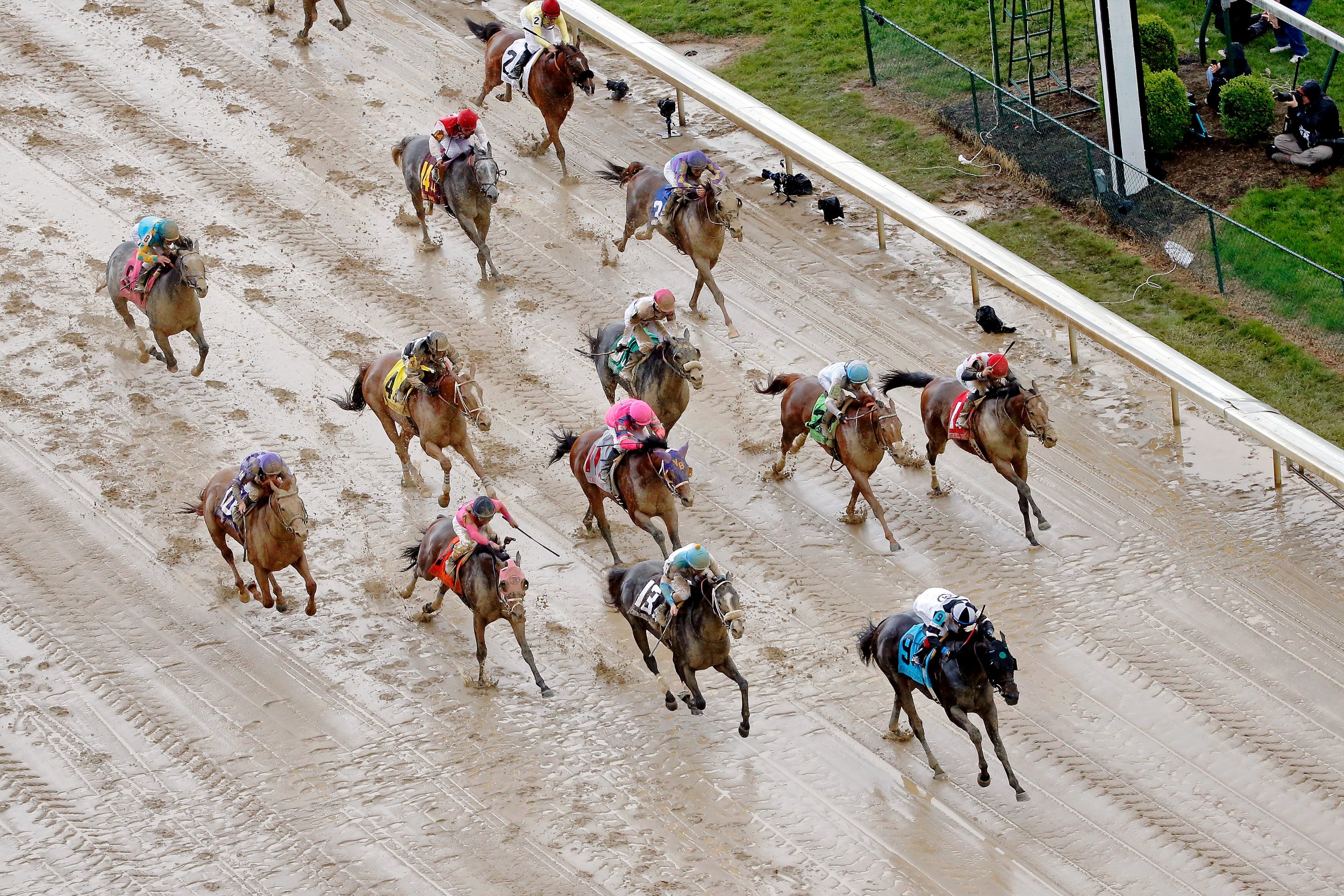


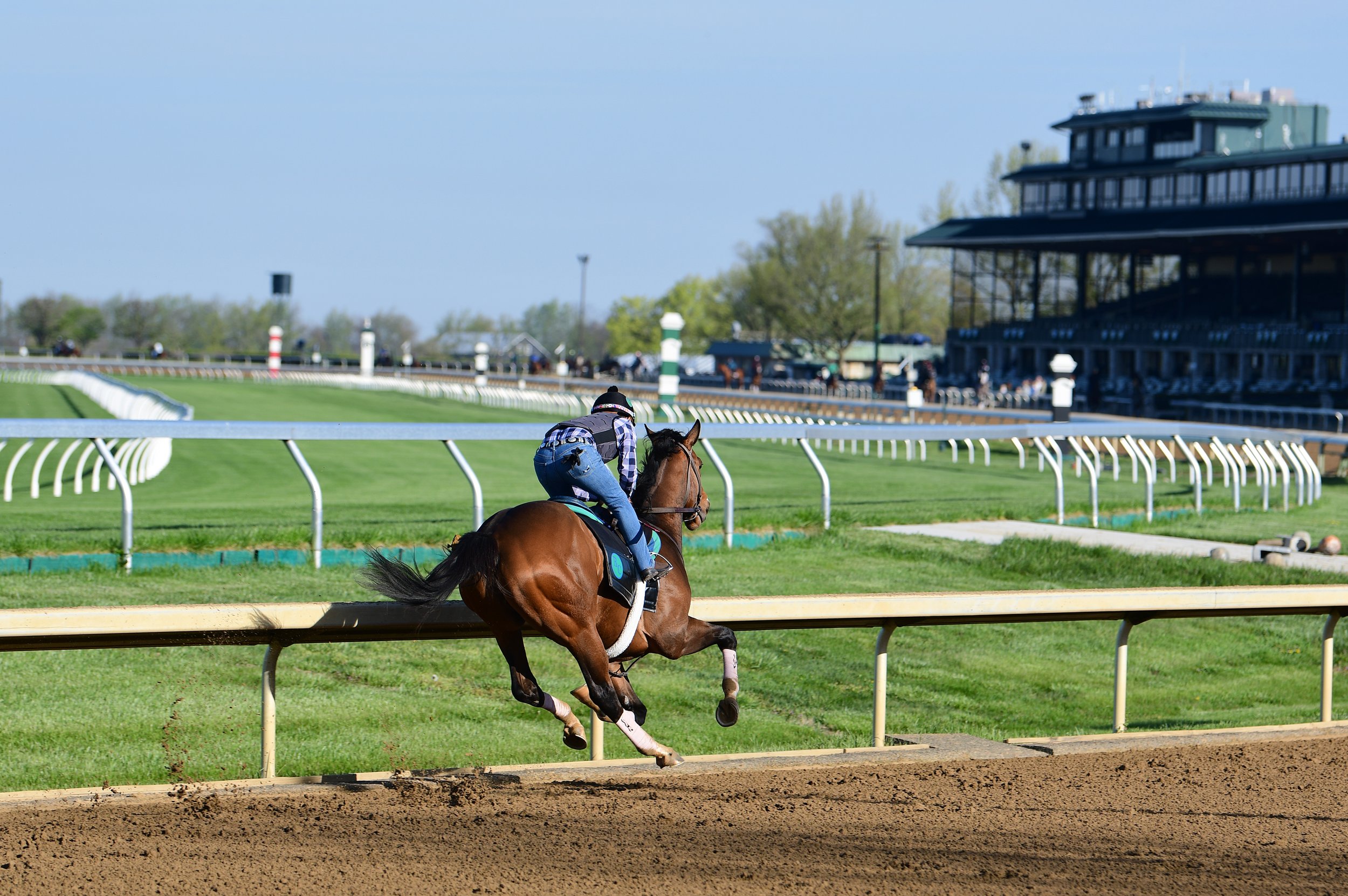










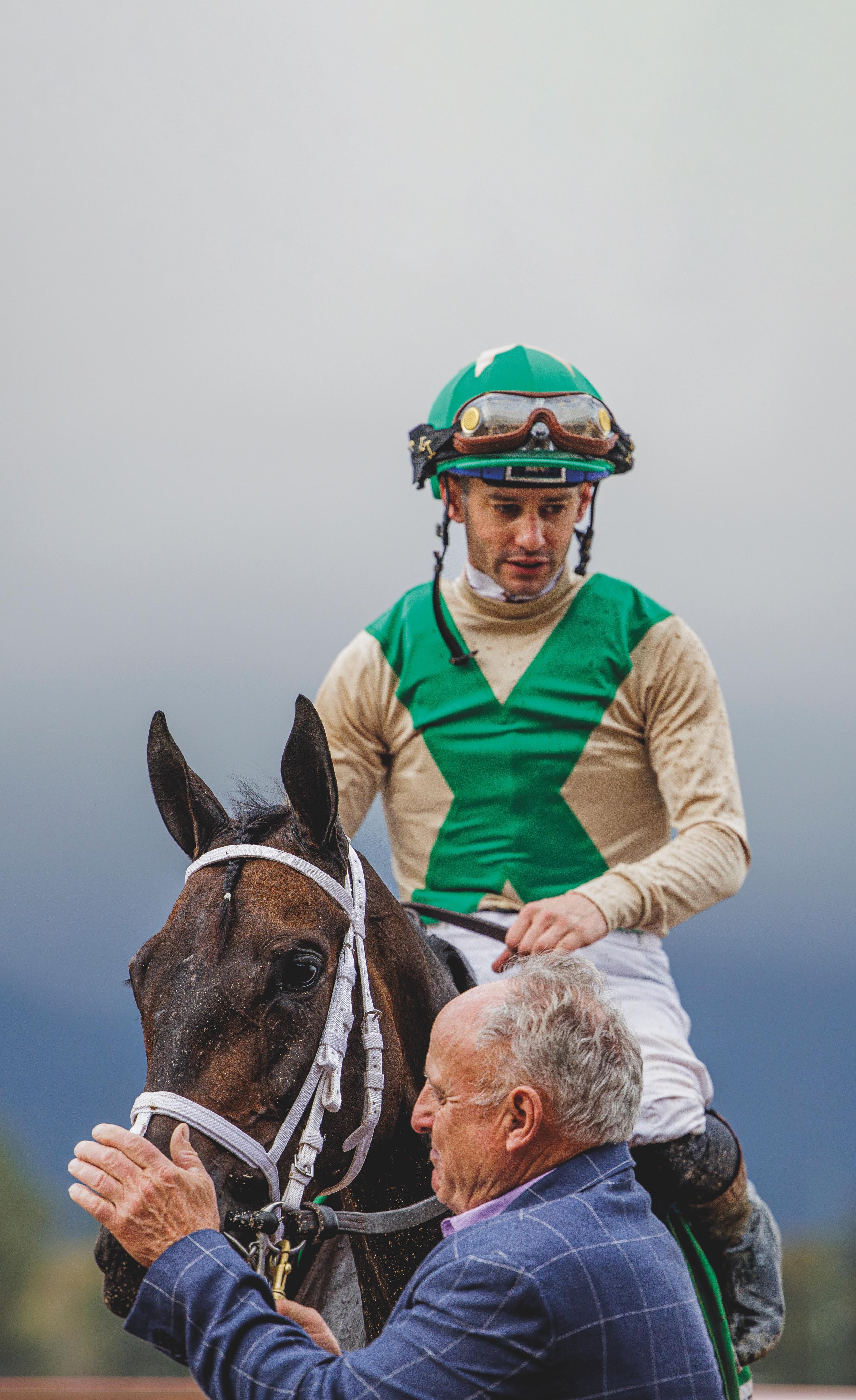












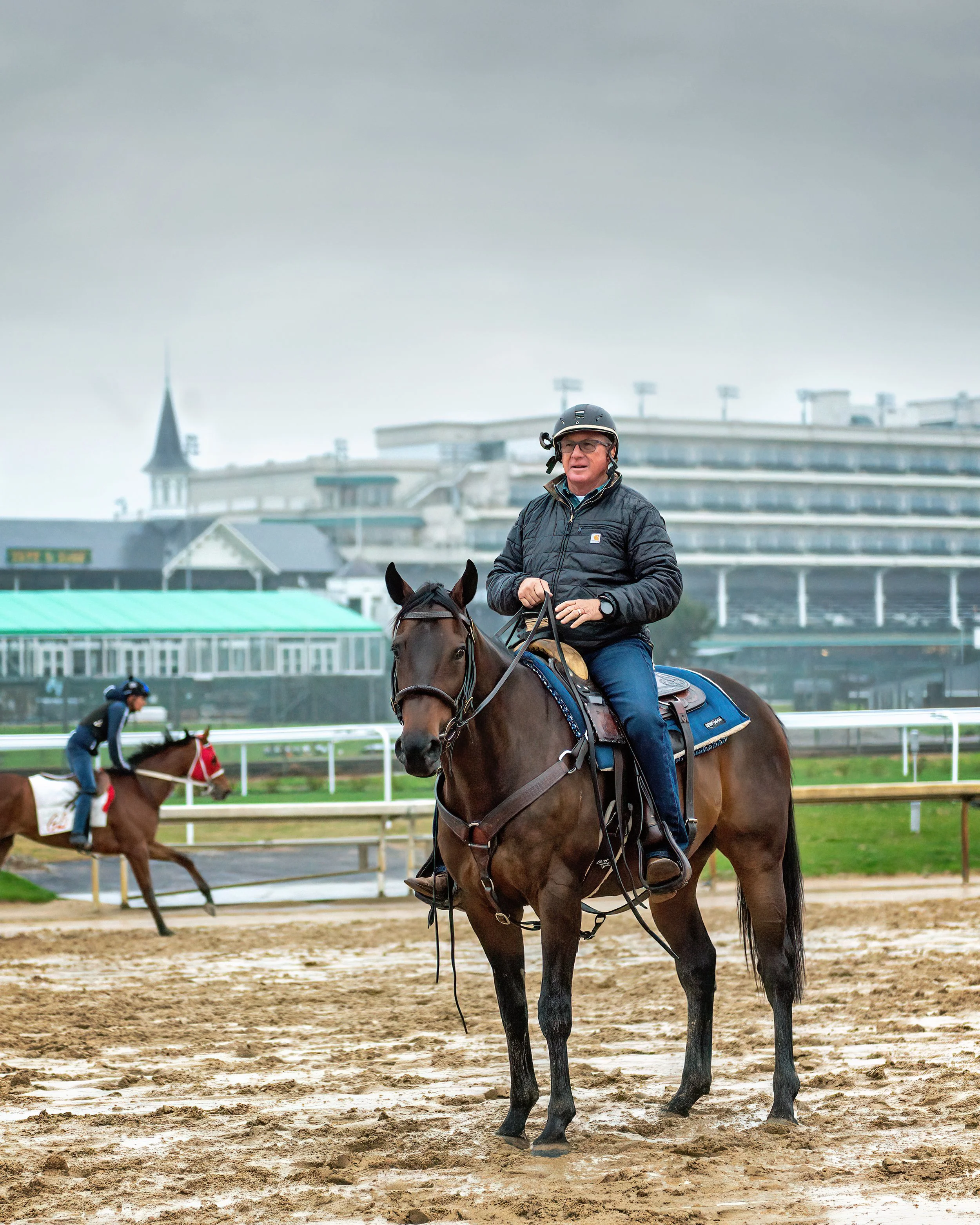



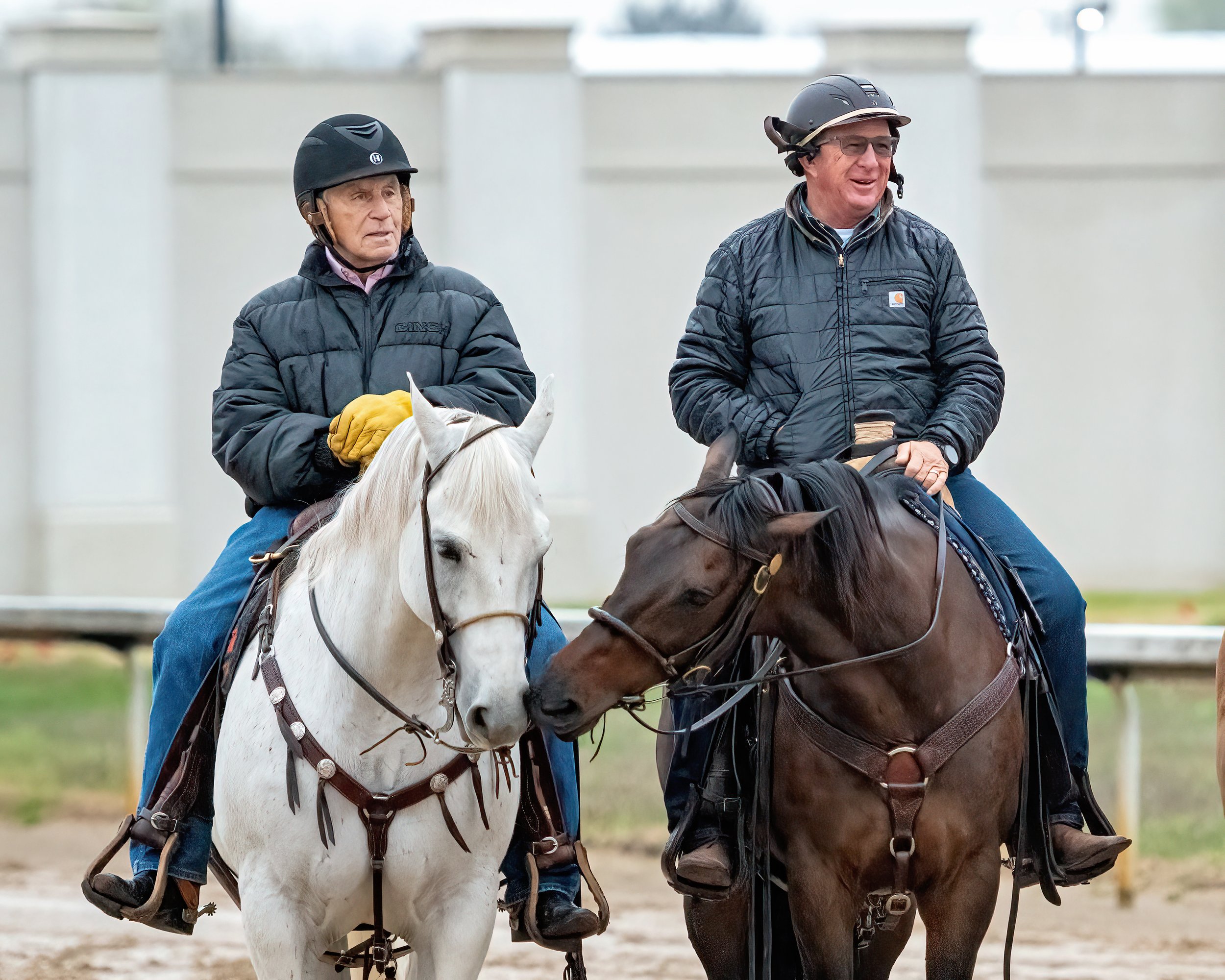



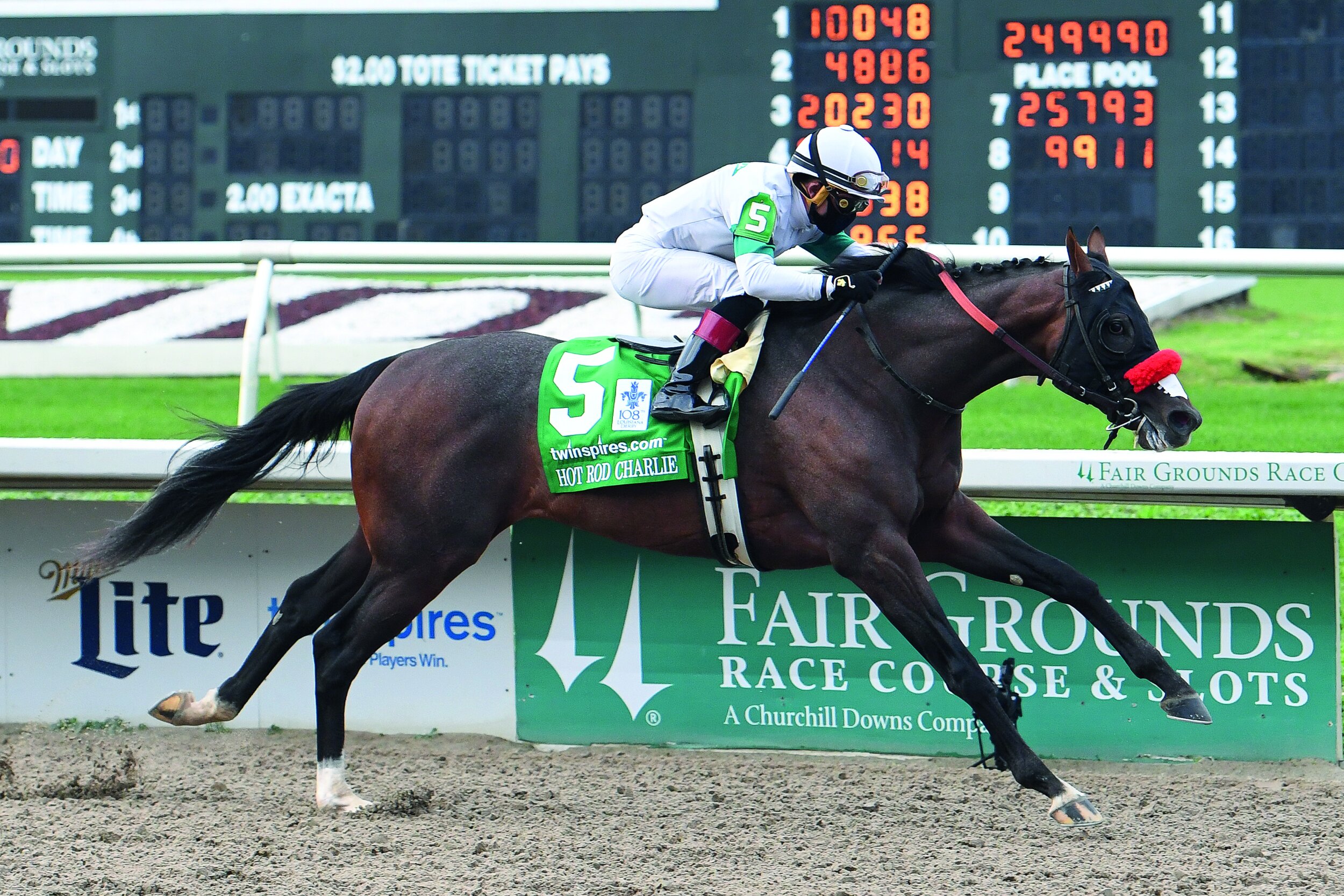
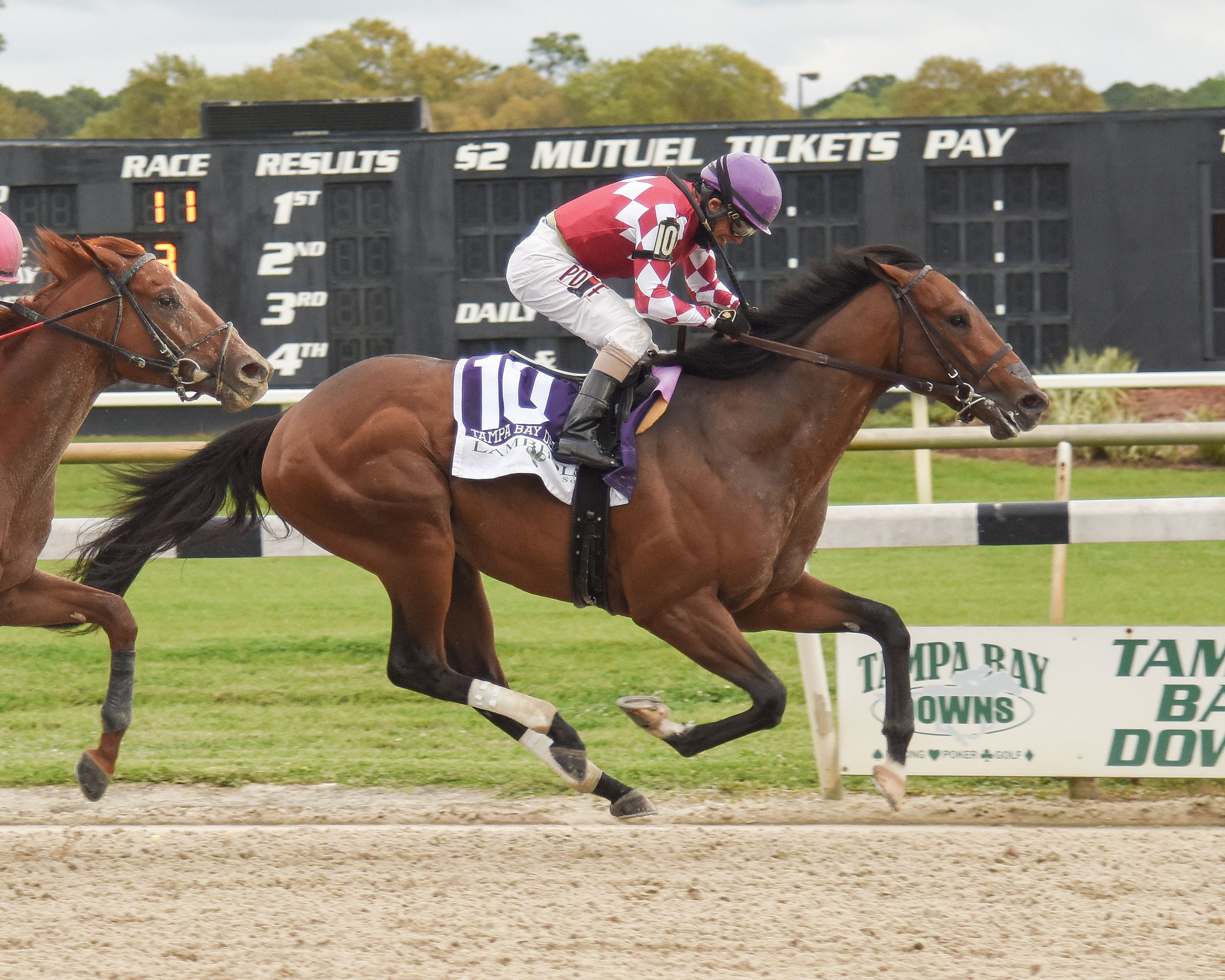



![Cover Profile - Thomas Drury Jr.By Bill HellerNudged into the Kentucky Derby spotlight by Art Collector’s commanding 3 ½-length victory in the Gr2 Blue Grass Stakes July 11 at Keeneland, Tommy Drury is an overnight sensation—30 years after he began training Thoroughbreds. Art Collector gave Drury his first graded stakes victory in the Blue Grass Stakes, earning enough points to start in the Kentucky Derby for owner/breeder Bruce Lunsford.“When you’re 28, you’re thinking about winning the Derby and Breeders’ Cup races,” said Drury, who took over Art Collector’s training at the beginning of his three-year-old season. “At 48, I didn’t even know I’d win a graded stakes. To win the Blue Grass is pretty special. I’m still trying to find the words.”This success immediately went to his head. He celebrated his greatest victory with a cold beer and a frozen pizza when he finally got home after the Blue Grass. “I didn’t finish either,” he confessed.Why? To be back at the barn at 5:30 a.m. the next day, a Sunday. His work ethic is just one of the elements of his highly successful, yet quiet, career. His career winning percentage is an outstanding 21 percent. He won at least 20 percent of his starts in 11 of his last 14 seasons heading into this year, including seven years when his victory clip was 25 percent or higher.No wonder top horsemen, including Al Stall, Bill Mott, Steve Asmussen, Frankie Brothers and Seth Hancock, have sent many of their horses needing a layup after surgery or time off to Drury’s barn at the Skylight Training Center, 27 miles northeast of Churchill Downs.“As far as top horsemen, he’s been a top one for years, but he just hasn’t had the opportunity to win at the highest level,” Stall said. “I send him rehab cases. We’ve had a good working relationship for more than 10 years. I might have sent him, oh gosh, over 20 a year—a couple hundred for sure. Ninety-nine percent of the time, he’s spot on about their fitness level.”Brothers said of his time knowing Drury, “It started with Tommy galloping some horses for me at Churchill Downs. He’s a smart, conscientious young man—an excellent horseman.”So how did Drury amass just 55 victories in his first six years of training after getting his license at the age of 18? He had to gallop horses on the side to pay his bills. “It didn’t come easy, and it didn’t come quickly,” he said. “There were days I said, `This isn’t going the way it should be going.’ But I always had at least one horse I was training.”There was another reason he persevered. “I didn’t know how to do anything else,” Drury said.His biggest fan, his mother Patty, said, “He started with one horse, and to have a horse like this [Art Collector] is unbelievable. I’m so happy and proud of him because he worked so hard to get to this point.”Drury’s father, Jerry, who galloped horses, passed away two years ago. “We were close,” Drury said. “I never had the privilege to work with him a lot because he had a lot of horses. He pushed me: if you work, you have to do it at the top level. He always pushed me to do that.”Drury began hot-walking on weekends as a kid. “I can remember walking horses when I was 10 or 11,” he said. “It’s all I wanted to do. On weekends, I’d go to the track. It’s just been in my blood. I could never see myself doing anything else.”He wanted to be a jockey but grew too big to do that. So he focused on training. “I had a friend, a little older, who got his license at 19,” Drury said. “Once I saw he was able to do it, I felt comfortable in my horsemanship.” He passed the trainer test and applied for a license at the age of 18.Racing steward Bernie Hettel didn’t believe he was 18. “I looked like I was 12,” Drury said. “I think I weighed 110 pounds. I showed him my driver’s license.”In his first six years, his win totals were five, seven, nine, eighteen, eight and eight. “I was working a second job, always galloping to help pay the bills,” he said. “Eventually, it started going the way I wanted. So I stopped galloping a few years ago. When I was riding, I worried about too many details. I think better when my feet are on the ground rather than in the air.”One of his most successful horses was Timeless Fashion, who won 11 of 34 starts, including six stakes, and earned more than $400,000. Unfortunately, Timeless Fashion’s first jockey, Justin Vitek, wound up with leukemia.Vitek rode Timeless Fashion in his first two starts, finishing second by a neck in a maiden race at Turfway Park, December 7, 2007, then winning an allowance race there February 2, 2008, by 4 ¼ lengths.“Justin had told me that whole day he was feeling bad,” Drury said. “He went to the hospital that night and was later diagnosed with leukemia. It went into remission and he worked for me and rode in races. Unfortunately, his leukemia came back, and he passed away. Justin was one of my closest friends. I flew to Texas and was with him the night before he passed. It was terrible.”Vitek, a native of Wallace, Texas, died on January 28, 2010 at the age of 36. Vitek’s biggest victory came on Miss Pickums, who captured the 2000 Gr2 Golden Rod Stakes at Churchill Downs. He had won 763 races with earnings topping $9.8 million.Six weeks after Vitek died, Turfway Park held a night to celebrate Vitek’s life, with his mother to present the trophy to the winner of the Tejano Run Stakes. Drury, who entered Timeless Fashion in the stakes, wore one of Vitek’s University of Texas caps which Vitek’s sister had sent to him. “Justin was a big Texan football fan,” Drury explained. Drury wore the cap that night and never again.Timeless Fashion hadn’t raced since the previous December 12th when he took the first of two consecutive runnings of the Prairie Bayou Stakes. Timeless Fashion won the Tejano Run Stakes by a half-length. “Justin’s mom presented the trophy to Judy Miller, the winning owner, and she gave it back to her,” Drury said. “Right before we went upstairs, we sprinkled some of Justin’s ashes in the winner’s circle. There wasn’t a dry eye in the house. It was insane. It was brutal, but we were fortunate to have had him in our lives. It was so special to win that race with his family there.”Drury resumed his career, which may have already been redirected by his Blue Grass victory. “This is going to change Tommy’s life,” Lunsford said. If it does, he’ll share it with 15-year-old daughter Emma, who rides show horses, and his 19-year-old son Matt, who’s in the restaurant business. They live just outside Louisville.Art Collector, a home-bred colt by Bernardini out of Distorted Legacy by Distorted Humor, has special meaning for Lunsford—an attorney, businessman and politician who ran unsuccessfully for the U.S. Senate as a Democrat in 2008, losing to incumbent Mitch McConnell.Lunsford’s Bunting was the dam of his Vision and Verse, who finished second to Lemon Drop Kid in both the 1999 Gr1 Belmont Stakes and Gr1 Travers. Vision and Verse won four of 21 starts and earned a tad more than $1 million. “Bunting was one of the first two horses we bought,” he said. “She had several useful horses, including Distorted Legacy, who finished fourth in the 2011 Gr1 Breeders’ Cup Filly and Mare Turf. “We kept her as a broodmare. Her first foal was a filly that didn’t race. Art Collector is her second foal.”Lunsford routinely sends 10 of his yearlings to be broken and trained at Travis and Ashley Durr’s Webb Carroll Training Center in St. Matthews,S.C. Durr does the breaking and training, and Ashley is the Center’s business manager.Travis’ family raced and trained Quarter Horses, and Travis rode them at bush tracks in Georgia, S.C. and N.C., starting at the age of 12. When both his grandfather and father began working with Thoroughbreds, Travis started breaking and training them. Travis was 15 when his father passed in 1995, and he took over the business. Travis joined Webb Carroll in 2007, and in 2016, he and his wife purchased the Center.“We are known for our large sets—15 to 17 horses in the winter,” Travis said. “All we do is breaking, training and layups. We don’t have to have things being done by a specific time. We have a lot of turnouts. We individualize the horse’s training. We just try to produce racehorses.”Art Collector is just the latest top horse the Training Center has developed, following Havre De Grace, Country House, Abel Tasman, Firenze Fire, Goldencents, Runhappy, Irish War Cry and Shackleford.Art Collector arrived at the Training Center in July 2018. “He showed ability from day one,” Travis said. “He stood out. He handled the breaking very well, always did his job—an easy horse to be around. He started breezing in February. He was breezing a lot easier than others. As we went on with the horse, he kept progressing the right way. He was the best of Bruce’s bunch. He sends us around 10 yearlings a year.”On May 9, Art Collector was sent home and then to trainer Joe Sharp to begin his career at Saratoga in July. Art Collector’s first three starts were on turf. He finished second in a maiden race at Saratoga August 15, first in a maiden at Kentucky Downs and then seventh in the Gr3 Bourbon Stakes at Keeneland.Switched to dirt on November 30, he lost his action in a 6 ½ furlong allowance race under Brian Hernandez Jr., who has ridden Art Collector ever since. Hernandez was about to pull Art Collector up, but Art Collector wasn’t done, getting back in the race and finishing sixth by 8 ½ lengths in the first of four consecutive races at Churchill Downs.Art Collector’s final start as a two-year-old last November 30 was a breakthrough 7 ½-length victory on a sloppy track.That victory would be taken away months later. On March 3, word broke that Art Collector was one of several sharp horses who tested positive for levamisole, listed as a Class 2 drug by the Association of Racing Commissioners International largely for its potential to metabolize into the powerful stimulant aminorex. Art Collector was disqualified.Lunsford needed a new trainer. “I didn’t want to be in the middle of that,” he said. “I took him off the track. Gave him three months. I said, `Forget the Derby. We’ll shoot for something later, like the Travers.’”Then the world began changing as the coronavirus pandemic swept around the entire globe. Suddenly, the Kentucky Derby was not on the first Saturday of May, rather postponed until the first Saturday in September, the 5th. “The delay was the best thing that could have happened for us,” Lunsford said. “I gave him to Tommy. I told him, `If you get this horse back and he wins first out, you have the horse for life.’”Why Drury? “Because I trust him,” Lunsford said. “I’ve watched him for years. I’ve given him horses that we rested and given them one start back in Tommy’s name. Watching him grow up, I think of Tommy like a nephew or an adopted son. We’ve had a lot of success. He’s a humble guy. He has no ego. Works his butt off. He treats people nicely; his barn help stays with him. He treats horses nicely. If it’s really about the horse, you just don’t say it—you do it. I knew with Tommy and Jose (Garcia, Tommy’s long-time assistant), that Art Collector would be treated better than I get treated in my life, with the exception of my girlfriend. If we win the Derby, I don’t know if I’ll be happier for Tommy or for the horse.”With Art Collector at Skylight Training Center, Lunsford stops on the way to check up on his star. Trainer Ian Wilkes is on the other side of the Drury barn. “There are 21 guys there, and I pick up biscuits for the guys on the way there,” Lunsford said. “They rub their stomachs when they see me coming.”Drury didn’t take long to like what he saw coming with Art Collector. “I knew Bruce really liked the horse,” he said. “When someone like him says something like that, you pay attention. He’s been there before.”Drury quickly realized why Lunsford liked Art Collector. “I have never had a horse like this,” Drury said. “He’s a very good-looking, well-balanced horse. What I like most is his intelligence. He’s a very smart horse. You work him with others, and he’s fine. You can move him with your fingertips.”Drury began slowly with his new colt. “We eased him back into it,” he said. “We started breezing him. I got Brian Hernandez to work with him. He had ridden him as a two-year-old. He shared his thoughts. It helped. We worked as a team.”Garcia has been an important member of the Drury’s team for 22 years. “We started together with a small stable with just a few horses,” Garcia said. “I like him and he likes me. We have good communications. You have to see to the details. The small details are very important.”Art Collector made his first start for Drury in a seven-length allowance race on May 17, 15 days after the original date for the Kentucky Derby. He won by 2 ¾ lengths, covering seven furlongs in 1:22 3/5.“He won so impressively,” Lunsford said. “Seth Hancock texted me. He said, `I hope you’re going to leave your horse with him.’ I said, `That decision’s already been made.’”That decision looked even better when Art Collector won another allowance race—this one at a mile-and-a-sixteenth, by 6 ½ lengths as the 7-5 favorite in a sharp 1:41 1/5, earning a 100 Beyer Speed Figure on June 13.Art Collector was ready to step up. He would make or break his case for the Kentucky Derby. He had no Derby qualifying points, and the 100 for the winner of the Blue Grass would either propel Art Collector onto the Derby or force Drury and Lunsford to choose an easier path.The horse to beat in the Blue Grass and the slight betting favorite at 2-1 was Kenny McPeek’s outstanding filly Swiss Skydiver. Art Collector was the 2-1 second choice in the field of 13. “We wanted to put pressure on Kenny’s filly,” Drury said. “The only thing I told Brian was not to be locked in with one trip. It actually went the way we thought it would go.”Hernandez delivered a flawless ride. He made a good decision early to avoid a three-horse duel on the front end, and Art Collector settled in nicely as a close third. Around the far turn, Swiss Skydiver took over, and Art Collector quickly ranged up to her.At the head of the stretch, Swiss Skydiver found more. “There was a split second near the eighth pole, she dug in, and I thought he wasn’t going to win,” Drury said. “After that point, it becomes a blur. `Oh, my God, we’re going to win the Blue Grass!’ It’s hard to describe it in words. You wait for the opportunity, and when it happens, it’s huge. You’ve waited so long to be there.”After the race, Drury cooled out Art Collector. “We gave him a good soaking bath, took him out to the grass, let him graze, put the bandages on him, and got ready to go back home,” Drury said. When he got home, he splurged with cold beer and even colder pizza.Drury knows that Churchill Downs’ decision to push back the Kentucky Derby four months allowed his late-developing three-year-old to walk into the starting gate. “We’re certainly aware of it,” Drury said. “It’s been a strange year. It’s almost like it was meant for us.”Before the Blue Grass, Drury instructed his mother not to use the “D” word. Two days after the race, she texted him, asking, “Are you definite for the Kentucky Derby?” Drury texted back, “Eight weeks to the Derby—that’s a lifetime.” He explained, “Eight weeks is a long way away when you’re talking about horses. I hope we get there. It’s a big deal, but we’re not doing anything to jeopardize this horse.”Drury and Lunsford must decide whether or not to give Art Collector a race before the Derby. “It’s really a good problem to have,” Drury said. “I think it’s a fantastic problem to have.”Initially, he ruled out the Gr1 Travers at Saratoga, August 8. “People ask, `Travers?’ No way. I’m not shipping to New York to run against Tiz the Law,” Drury said. If Art Collector gets a Derby prep, it will likely come in the Ellis Park Derby August 9.Lunsford was asked what a Kentucky Derby win would mean to him. “I go all the way back to Secretariat,” he said. “I said, `One of these days, I want to own one of these horses.’ If I won the Kentucky Derby with 40 friends rooting for us because we’re from Louisville, it’d be like the World Series for this poor kid from Piner, Kentucky.”For Drury, it would be an affirmation of three decades of hard work. Asked what it’s like to be an overnight success after 30 years, Drury said, “It’s funny. For me, I’ve never received this amount of attention. I’m usually the guy behind the scenes. That being said, I’ve been close enough to good horses, and that’s helped me a lot. At the end of the day, we have to focus on the horse. You take the rest of it in stride. It’s not about me. It’s about him.”Actually, it’s about both of them—teammates in the pursuit of Kentucky Derby immortality in the strangest year the world has ever seen. ](https://images.squarespace-cdn.com/content/v1/517636f8e4b0cb4f8c8697ba/1596792110442-ZKLXNEUI8IGB2263R98Y/20_0716_Tom+Drury_mw-6159.jpg)







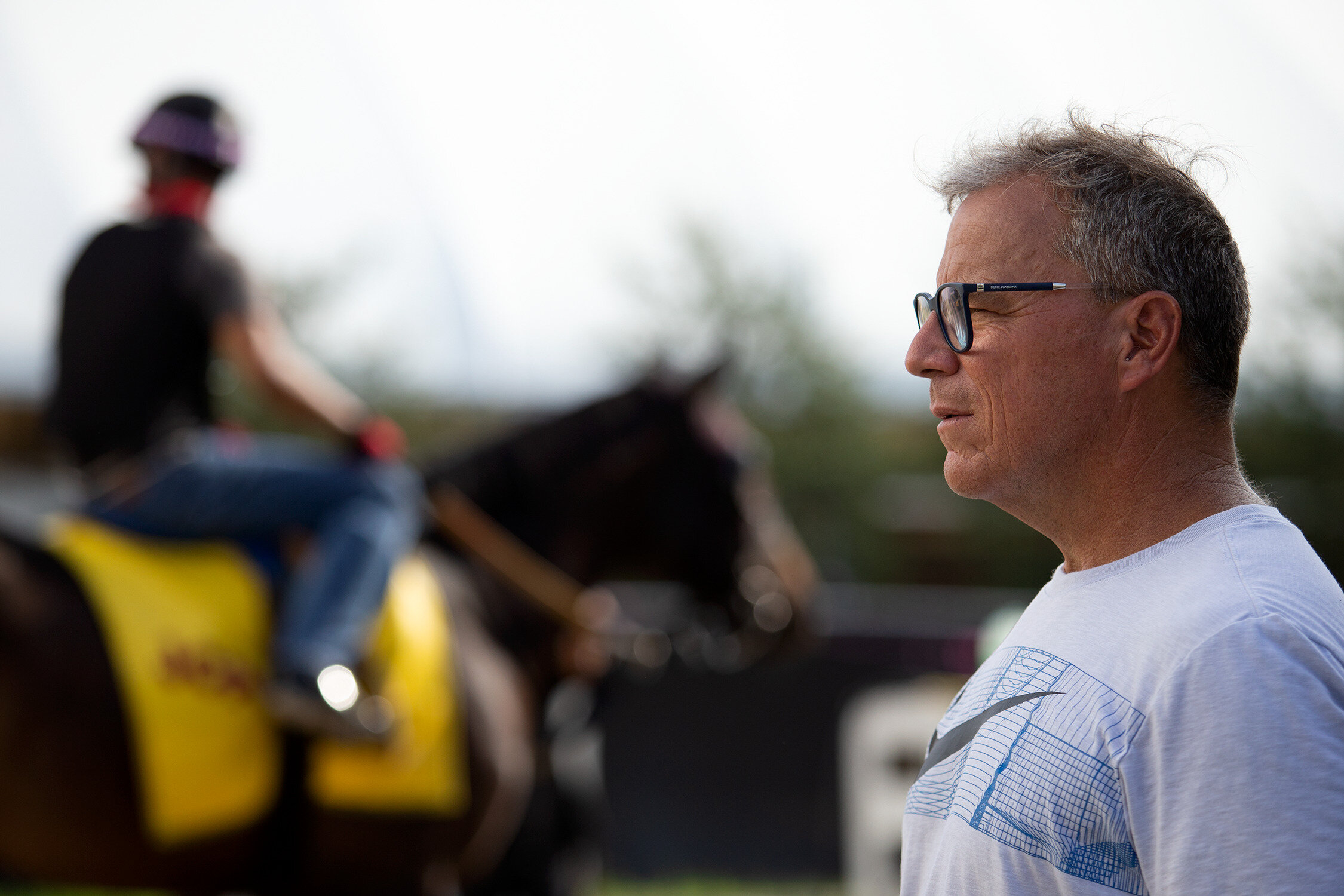












![Grade 1 OwnersBy Bill HellerGeorge Bolton (Nadal)Having campaigned such stars as two-time Horse of the Year Curlin, Lady Aurelia, My Miss Aurelia and The Factor did absolutely nothing to diminish George Bolton’s excitement for his latest home-run hitter, the undefeated three-year-old colt Nadal, whom he owns in partnership with Barry Lipman, Mark Mathiesen and Arthur Hoyeau.Unfortunately, on May 28, after working a half-mile at Santa Anita, Nadal suffered a colyndar fracture of his left front knee. Surgery was done with two screws were inserted, and Nadal will be able to start a new career as a stallion.Bolton is thankful that he saw all of Nadal’s four victories. Bolton sneaked into Oaklawn Park May 5 to watch Nadal improve his record to four-for-four by taking the second division of the rescheduled Gr1 Arkansas Derby for trainer Bob Baffert.“If they can really run, you get your ass there,” Bolton said. “I went to see every one of his races: his maiden, his San Vincente, Rebel and the Arkansas Derby. I was the only owner allowed in at Oaklawn. I snuck in. I had a mask on, but I wasn’t near anyone. I wanted to be with the horse. This is a special horse. I spent as much time at the barn after his race as before. I never missed Curlin, Lady Aurelia, The Factor and My Miss Aurelia. For me, you get the one that’s good, you go see him.”He was perfectly happy sharing the experience with his partners. “Celebrating by yourself isn’t much fun,” Bolton said. “You spread the risk. At the level I play at, when you’re buying, you have to do it as a partnership.”Bolton, who is the chief investment officer, portfolio manager and partner of WestEnd Capital Management in San Francisco, currently lives in Key Largo, Fla. He was born near Pimlico Race Course in Baltimore. “I grew up on a farm that my great, great aunt owned,” he said. “It was left to my father. He had a lot of jumpers. I grew up around it.”He graduated with honors from the University of Virginia in 1985 with a Bachelor of Arts degree in economics. He’s been an avid supporter of the Cavaliers, and rode the roller coaster of seeing Virginia become the first basketball No. 1 seed to lose to a No. 16 seed—the University of Maryland-Baltimore-County—in the NCAA Tournament, and winning the national championship the following season. “I’ve been swinging with the Cavaliers for a long time,” he said. “Virginia is a great place.”In college, Bolton had the good fortune of becoming friends with Bill Farish, whose father, Will, a former United States Ambassador to the United Kingdom, was building Lane’s End Farm in Kentucky.“Bill asked me to get involved in the business in 1989,” Bolton said. “I just got off to a good start. I didn’t have anybody marking up horses for me.”By 1989, Bolton had moved to San Francisco after working for Alex Brown & Sons in Baltimore. He continued to work for them in San Francisco, becoming the firm’s youngest managing partner in 1991. While leading institutional equity sales on the West Coast, he also separately managed accounts for high net-worth individuals. In 2004, Bolton left Alex Brown to become a partner and chief investment officer at WestEnd Capital Management.His ongoing success has allowed him to pursue his passion, where he’s become a major player. The Farishes brought Bolton in on a Miswaki filly named Exotic Moves. “We sold her after she won three races for a clean `double,’ and I was hooked,” he told the Paulick Report in a March 26, 2018 story.Curlin—the 2007 and 2008 Horse of the Year—took him to a whole new level, winning 11 of 16 starts and earning more than $10.5 million. No victory was more meaningful to him than Curlin’s come-again victory in the Preakness in Pimlico. “He got passed, and he came again,” Bolton said. “It was crazy. Most of the stretch, I thought he would lose.”Bolton’s My Miss Aurelia, the 2011 Champion Two-Year-Old Filly won the first six starts of her career and never finished out of the money in 11 starts, earning more than $2.5 million. The Factor, who continues a marvelous stallion career at Lane’s End, won six of 13 starts and more than $900,000. And Lady Aurelia, who won five of 10 starts and more than $800,00, captured the 2017 Gp1 King’s Stand Stakes at Royal Ascot, defeating 17 colts and three fillies.The international bloodstock agent Kerri Radcliffe hooked up with Bolton in 2018, buying yearlings for him in Australia, Europe and the United States. “George got in touch with me, and he said `I want you to buy for me,’” she said in a phone interview from Newmarket May 15.She purchased Nadal—a massive, muscular colt by Blame out of the Pulpit mare Ascending Angel bred by Sierra Farm—for $700,000 at the 2019 Gulfstream Park Two-Year-Olds-in-Training Sale that March for Bolton and another investor. The second investor bailed, and Bolton reached out to Lipman, Mathiesen and Hoyeau. Trainer Randy Bradshaw had originally purchased Nadal for $65,000 as a yearling. “When I was looking at him, Randy told me, `Kerri, this is a special horse,’” Radcliffe said. “He breezed like a monster, and when you saw his breeze and saw how big he was, you couldn’t quite figure out how that horse did that.”She named him for tennis star Rafael Nadal. Previously, she had named a colt Gronkowski for Ron Gronkowski, the All-Pro tight end of the New England Patriots.The equine Nadal had a rough time getting to the races. After beginning training at Los Alamitos, Baffert shipped Nadal to his barn at Santa Anita. On the van trip there, he kicked out of his stall and got his hind leg caught over the partition. “He flipped over,” Bolton said. “He cut himself on the back of his legs and had lacerations on his hocks. When we finally got him back, he wasn’t working well. We examined him again and gave him three months off. Sometimes, missing a two-year-old year helps as a three-year-old.”Nadal, who weighs in at 1,325 pounds, hasn’t done a thing wrong since returning to Baffert. “He’s a monster,” said Bolton, who compared him to former New York Giants tight end Jeremy Shockey and legendary Hall of Fame Buffalo Bills’ defensive end Bruce Smith. “It takes him a little while to get going, but his gait versus the other horses is exciting.”So are the results. “I had 68 texts right after the Arkansas Derby,” Bolton said. “Twenty-eight were from racing people; 40 of them were from Virginia and business people. All of them watched the Derby. It was great for the sport because it’s great that people know him.”And the tennis star he’s named for? “I’ve talked to his agent,” Bolton said. “He’s aware of the horse. I am a big fan of him as a person and as an athlete. I hope he’s enjoying the horse.”Bolton sure did. So did Nadal’s other owners: Lipman, whose family runs Lipman Family Farms—North America’s largest tomato grower with headquarters in Florida; Mathiesen, who owns a medical service company and was introduced to racing by his daughter Hannah; and Hoyeau, a French-based bloodstock agent. “These guys are guys you want to work with,” Bolton said.Chris Mara (Charlatan)New York Giants Senior Vice President Chris Mara’s passion for Thoroughbred racing goes back a long way. After purchasing a football franchise—which ultimately became the New York Giants—for all of $500 in 1925, his grandfather, Tim Mara, was a legal bookmaker at Belmont Park in the 1930’s. Tim passed both his Giants’ legacy and his love of Thoroughbreds onto his son Wellington, who in turn passed it onto Chris and his brothers.“He influenced my dad, and my dad influenced me,” Chris said in a phone interview. “The first Saturday in May, you couldn’t find my dad. He and my mom were at the Derby.”His father took him to Belmont Park for the first time when he was 10.Chris’ first trip to the Kentucky Derby was in 1982 when he, his parents and their dear friends the Rooneys watched Gato del Sol take the first leg of the Triple Crown. Chris would marry Kathleen Rooney, NFL pioneer Art Rooney’s granddaughter.Chris spent one summer, while in college at Boston College after transferring from Springfield, parking cars at one of the Rooneys’ racetracks, Yonkers Raceway. “I loved it,” Chris said. “It was a very interesting job to say the least. The guys were teaching me how to park cars. I parked one, and when I returned the car, the guy gave me a $20 tip. That was like 1977 or 1978. It was a lot of money. I told the guys, `They gave me $20.’ They said, “You [bleep, bleep].’”He came a long way from parking cars at that harness track. Some 35 years ago, he owned his first Thoroughbred, Itchy Hooves, with his mom. Fast forward a lot of years. After meeting Starlight Racing’s managing partner Jack Wolf in a Saratoga golf tournament hosted by basketball coach, Thoroughbred owner and long-time friend of the Mara family Rick Pitino in August 2012, Chris decided to make a serious commitment to Thoroughbred ownership by joining Starlight Racing.“I had been looking into it,” Chris said. “I sought out a couple different people and asked them what they thought I should do. They suggested various syndicates. I looked at all of them. Then I sat down with Donna Brothers (who works for Starlight Racing) at the Saratoga Sale. Then I met Jack Wolf on the golf course at Saratoga National.”That did it. Maybe Chris was feeling giddy—the after effect of a memorable year, which featured the New York Giants beating the previously unbeaten New England Patriots in the Super Bowl; and his daughter, Rooney Mara, for being nominated for an Academy Award for her title role in “The Girl with the Dragon Tattoo.”In a May 3rd Newsday story, Chris told Ed McNamara, “I sat down with Jack, and he asked me what I was going to bring to the table; and I answered, `Luck! We just won a Super Bowl, and my daughter is up for an Academy Award!’”That very afternoon, Chris and Starlight Racing’s two starters in the 2014 Kentucky Derby—General Rod and Intense Holiday—finished 11th and 12th, respectively, to California Chrome.In 2018, two months before the Kentucky Derby, Chris, through Starlight Racing, became a partner on both Justify and Audible, who finished first and third in the Run for the Roses. Then Justify became racing’s 13th Triple Crown champion and retired as the only undefeated Triple Crown champion.This summer, Chris and Starlight are back again as partners on undefeated Charlatan, who injured his ankle in early June and will be pointed to the Preakness Stakes, now the final leg of the Triple Crown this year. Charlatan’s ownership includes a bunch of other partners and partnership groups. “It’s a lot of people,” Wolf said May 14. “They’re really fine partners to have.”Charlatan was scheduled to test his three-for-three record in the rescheduled Belmont Stakes on June 20 as the first leg of an entirely rescheduled Triple Crown, to be cut back from a mile-and-a-half to a mile-and-an-eighth in this chaotic year defined by the coronavirus pandemic plaguing the entire globe.“Ever since I got involved with Starlight, the ultimate goal was to get a horse to the Derby,” Chris said. “With Charlatan, it’s just fun to have a horse like this.”Hearing that would make his grandfather smile.“I just love this sport,” Chris said. “I loved reading about my grandfather.”It’s hard for Chris to not think of his grandfather. “I walked into Belmont Park one day and there was a picture of my grandfather taking bets on the second floor,” Chris said.In the picture, Tim Mara is wearing a large, silver button stating he was a legal bookmaker. The button has been passed on to Chris. “I kept it in my pocket before the 2018 Kentucky Derby,” Chris said. “I didn’t wear it, but it worked. I will bring it with me for Charlatan.”Asked what he thought as Justify crossed the finish line to win the 2018 Kentucky Derby, Chris said, “I hope I didn’t lose all the winning tickets. I had a lot of them. My grandfather would have been proud, but he wouldn’t have been happy because he was the bookie.”Jack Knowlton (Tiz the Law)Can it be 17 years since Sackatoga Stable partners rolled into Churchill Downs on a rented yellow school bus and left with all the roses when Funny Cide became the first New York-bred to win the Kentucky Derby? Funny Cide added the 2003 Preakness Stakes for the stable, which returns to this year’s Triple Crown chase with another New York-bred: Gr1 Florida Derby winner Tiz the Law, whose four-for-five record stamps him as one of the top contenders for this year’s revamped Triple Crown; he’s now beginning with the mile-and-an-eighth Belmont Stakes on June 20.Tiz the Law’s co-owner Jack Knowlton, the managing partner of Sackatoga Stable, can’t wait to see Tiz the Law back in action off his impressive victory in the Florida Derby March 28. “The good news is this horse has proven twice he could win off layoffs,” Knowlton said.It was Knowlton, who runs a health consulting firm in Saratoga Springs and created Sackatoga Stable by a seemingly innocuous question to his long-time buddies at a 1995 Memorial Day barbecue in Sackets Harbor on the shore of Lake Ontario: “Do you want to take a shot?”They did, and now they’re taking another with a whole different group of investors who comprise Sackatoga Stable—a name derived from his hometown, Sackets Harbor and Saratoga, where Knowlton works and lives. “Our merry band of 10 people, including five guys I went to school with, was a very closely held group,” Knowlton said. “After Funny Cide retired in 2007, it made sense to try to expand the horizons. We formed a management entity, Sackatoga Stable, Ltd. Then we formed 2 LLCs after that.”Only Knowlton and Lou Titterton remain in Sackatoga, which now numbers 50 people. There are 35 partners on Tiz the Law. “What’s great is we have numerous people who have been with me for 10 to 15 years,” Knowlton said. “We’ve vastly expanded geographically.”He has partners from California, Colorado, Delaware, Florida, Georgia, Maryland, Massachusetts, Michigan, New York of course, South Carolina and Texas. “It’s much more challenging logistically to put on events for 60 to 80 people,” Knowlton said. “For the Holy Bull, we had four suites at Gulfstream Park. We had a crew. We’ve got a lot of people who love the game.”It’s hard to imagine anyone loving horse racing as much as Knowlton, who had previously raced Standardbreds at Saratoga Harness across the street from Saratoga Race Course with Frank Coppola—a top driver and trainer at Saratoga Harness. They called their stable The Breakfast Club because they’d go out for breakfast together on Saturday mornings after their horses finished training. They did well, especially with Sunset Blue, who won more than $270,000 from 33 victories, 33 seconds and 32 thirds from 209 starts over seven years; and Paulas Big Guy, who posted 49 wins, 52 seconds and 35 thirds in 259 starts. The Breakfast Club owned both horses for part of their careers.A labor dispute and a horsemen’s strike at Saratoga Harness in 1994 pushed Knowlton out of harness racing. The following May, he popped that innocuous question to his buddies at a barbecue and the rest is history—wonderful history for Knowlton and his partners.Sackatoga Stable’s first horse was Sackets Six, a New York-bred who cost $22,000 and earned $111,730 under the guidance of trainer Tim Kelly. Four years later, they hired Tagg. Their first horse with Tagg, Bail Money, was purchased for $40,000 and earned $108,665 before he was claimed for $62,500.When Funny Cide lost his Triple Crown bid by finishing third to Empire Maker in the sloppy Belmont Stakes, Knowlton simply shrugged his shoulders and kind of smiled—a classy gesture by a classy man seen on national TV and in many pictures.Knowlton has used Funny Cide’s success to help the sport he loves by doing anything he can. He served as a member of the National Thoroughbred Racing Association’s Jockey Insurance Working Group; with the Ad Hoc Committee on the Future of Racing in New York State; with the New York State’s Task Force on Retired Race Horses; and as a member of the New York State Gaming Commission’s Aftercare Summits in Saratoga Springs.After Tiz the Law’s victory in the Florida Derby, Knowlton was doing a TV interview with Kenny Rice. “The second half of the talk was about Funny Cide,” Knowlton said. “The school bus—it never gets old. We became everybody’s darling. It was a feel-good story when the county needed a feel-good story.”Sounds like today, doesn’t it?](https://images.squarespace-cdn.com/content/v1/517636f8e4b0cb4f8c8697ba/1591896315852-GUMB2TW62O5J70FNKYF7/z200502_ArkansasDerbyDay_Manning_2438+%281%29.JPG)









